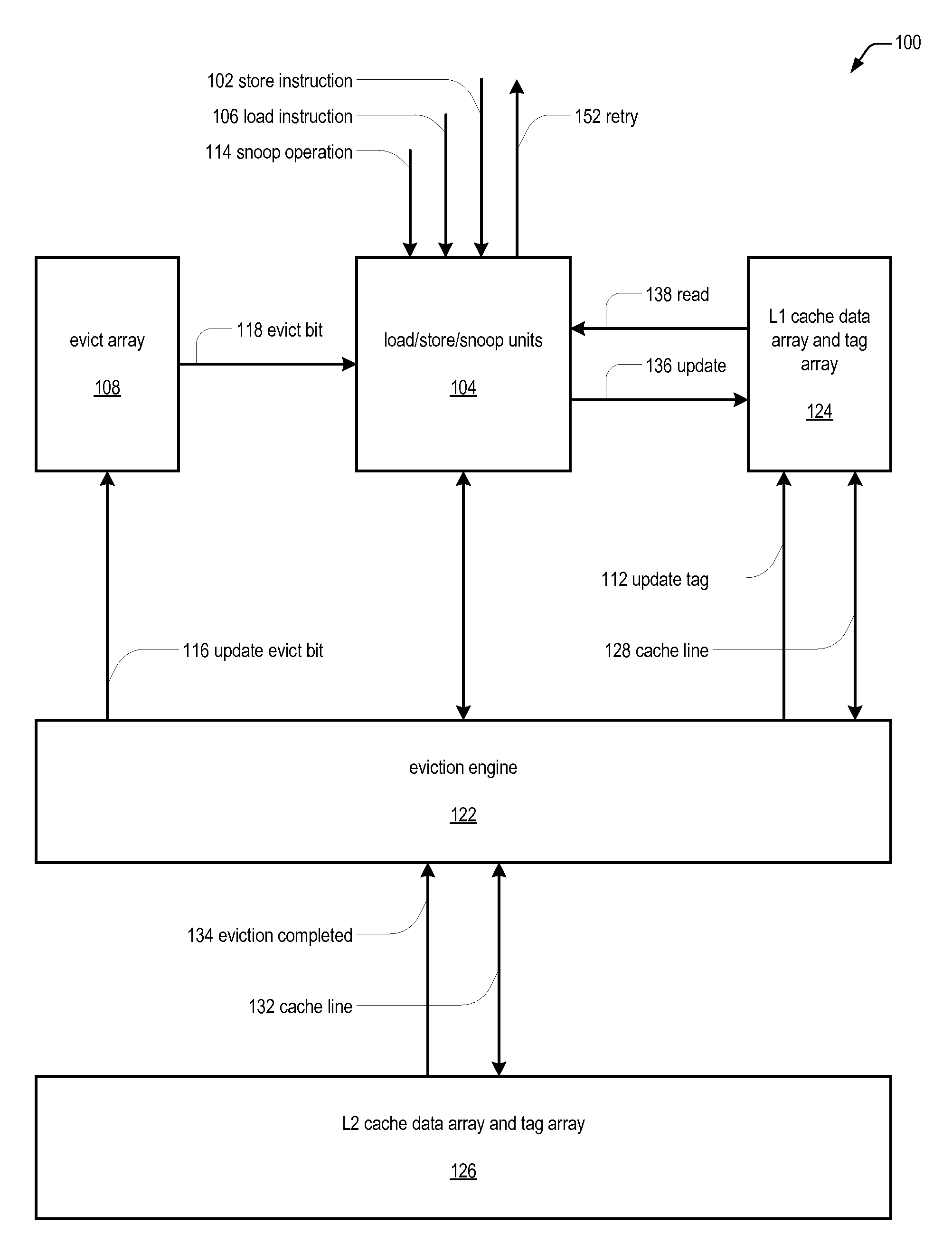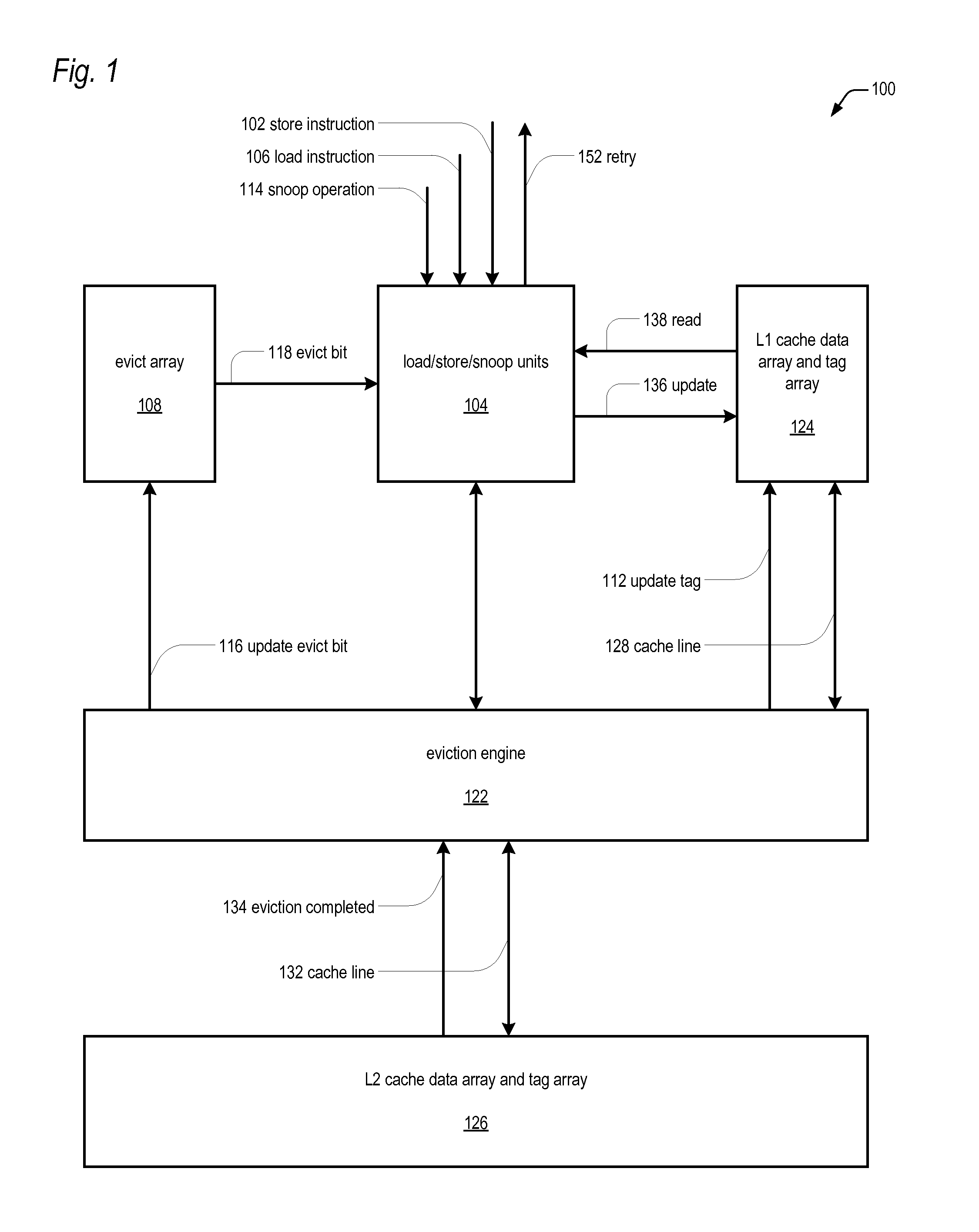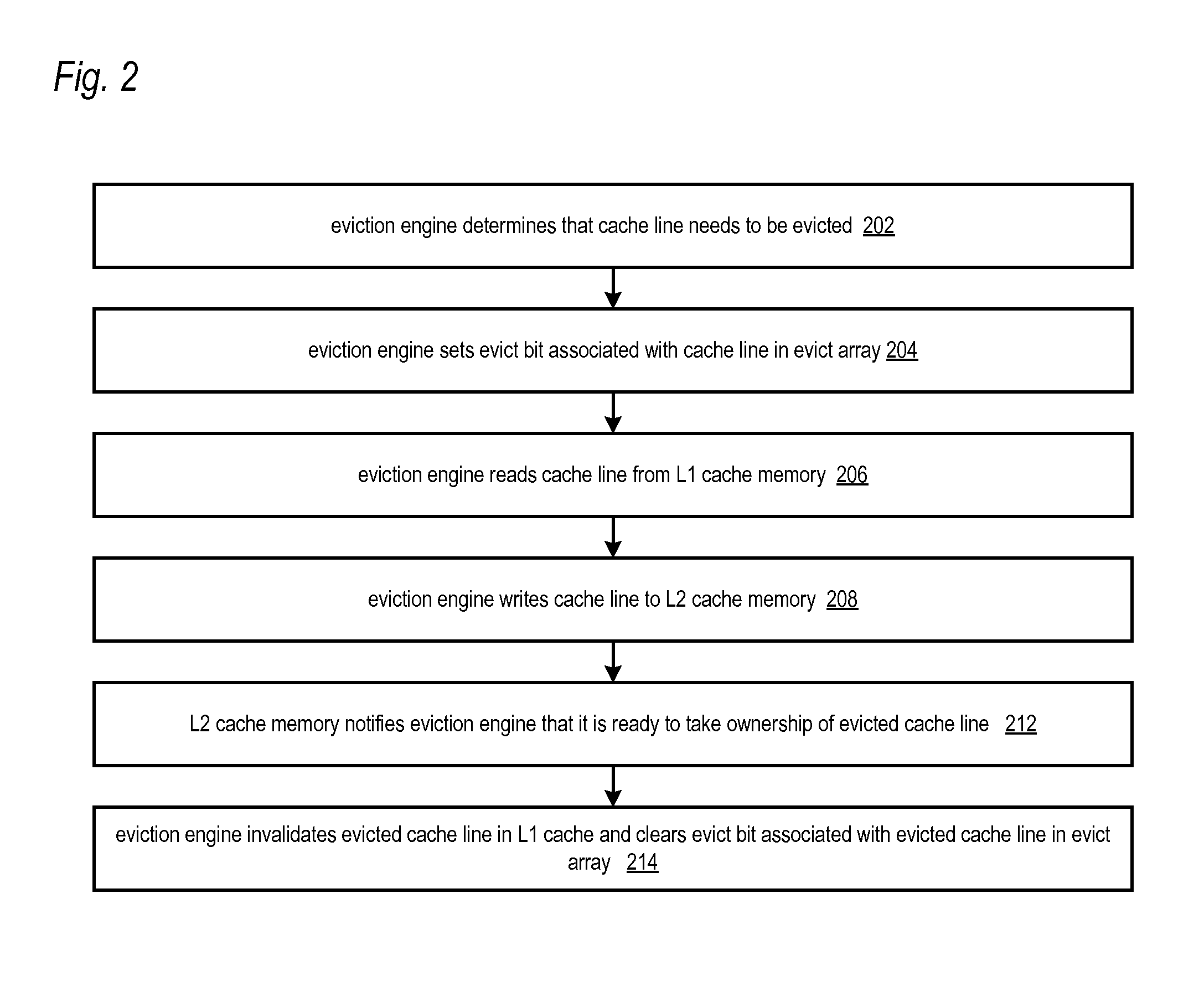Microprocessor cache line evict array
- Summary
- Abstract
- Description
- Claims
- Application Information
AI Technical Summary
Benefits of technology
Problems solved by technology
Method used
Image
Examples
Embodiment Construction
[0022]Referring now to FIG. 1, a block diagram illustrating a microprocessor 100 according to the present invention is shown. The Microprocessor 100 includes an eviction engine 122 that manages cache line eviction operations from a lower level cache memory to a higher level cache memory in a cache memory hierarchy of the microprocessor 100. The higher level cache memory and the lower level cache memory are exclusive. That is, each of the higher level and lower level caches retain different cache lines, with no overlap between the cache lines of the higher level and lower level cache memories. In one embodiment, the lower level cache memory is an L1 cache data array and tag array 124 and the higher level cache memory is an L2 cache data array and tag array 126. For brevity, the L1 cache data array and tag array 124 are referred to as the L1 cache 124, and the L2 cache data array and tag array 126 are referred to as the L2 cache 126 herein.
[0023]The microprocessor 100 also includes an...
PUM
 Login to View More
Login to View More Abstract
Description
Claims
Application Information
 Login to View More
Login to View More - Generate Ideas
- Intellectual Property
- Life Sciences
- Materials
- Tech Scout
- Unparalleled Data Quality
- Higher Quality Content
- 60% Fewer Hallucinations
Browse by: Latest US Patents, China's latest patents, Technical Efficacy Thesaurus, Application Domain, Technology Topic, Popular Technical Reports.
© 2025 PatSnap. All rights reserved.Legal|Privacy policy|Modern Slavery Act Transparency Statement|Sitemap|About US| Contact US: help@patsnap.com



